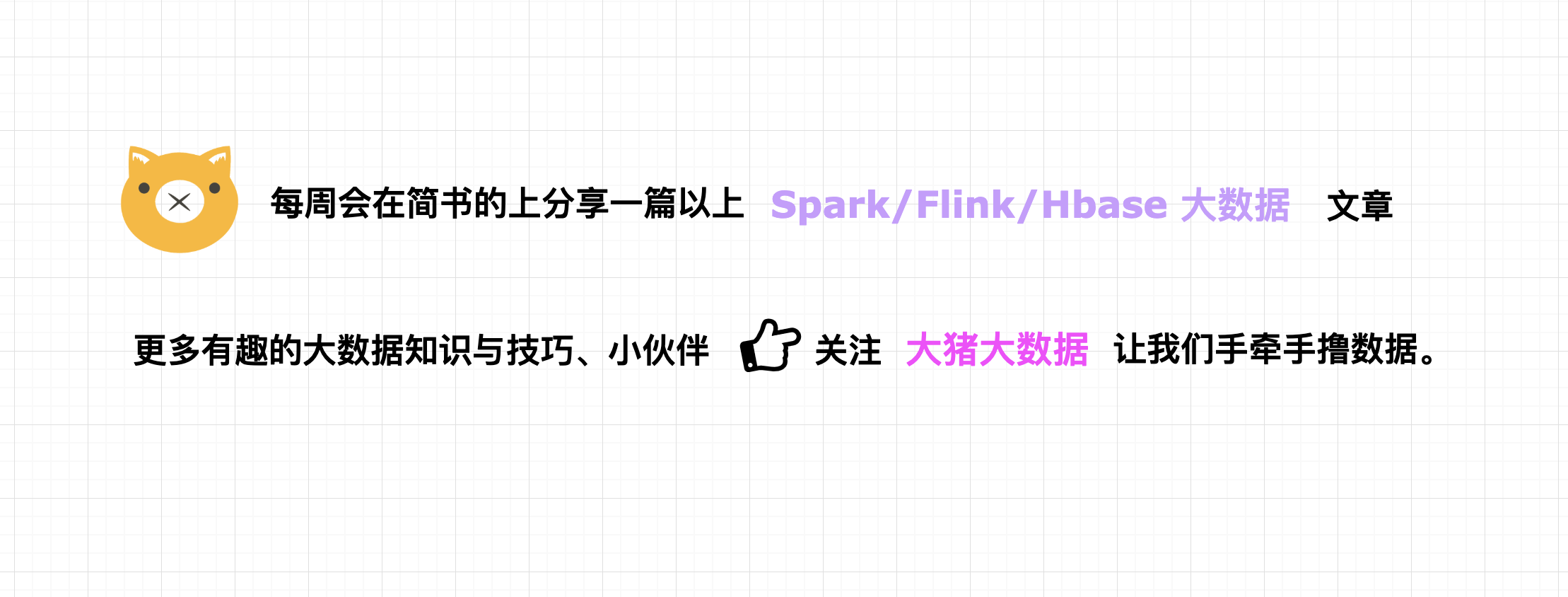In the data source of spark, only Append, Overwrite, ErrorIfExists, Ignore are supported. But almost all of our online businesses need the upsert function, that is, the existing data must not be overwritten. In mysql, we use: ON DUPLICATE KEY UPDATE. Is there such an implementation? Official: sorry, no, dounine: I have it. You can use it. Ha ha, in order to facilitate your use, I have packed the project into maven central warehouse so that it can be used quickly and easily.
Soil eating plan
MysqlClient.scala
import java.sql._ import java.time.{LocalDate, LocalDateTime} import scala.collection.mutable.ListBuffer class MysqlClient(jdbcUrl: String) { private var connection: Connection = null val driver = "com.mysql.jdbc.Driver" init() def init(): Unit = { if (connection == null || connection.isClosed) { val split = jdbcUrl.split("\\|") Class.forName(driver) connection = DriverManager.getConnection(split(0), split(1), split(2)) } } def close(): Unit = { connection.close() } def execute(sql: String, params: Any*): Unit = { try { val statement = connection.prepareStatement(sql) this.fillStatement(statement, params: _*) statement.executeUpdate } catch { case e: SQLException => e.printStackTrace() } } @throws[SQLException] def fillStatement(statement: PreparedStatement, params: Any*): Unit = { for (i <- 1 until params.length + 1) { val value: Any = params(i - 1) value match { case s: String => statement.setString(i, value.toString) case i: Integer => statement.setInt(i, value.toString.asInstanceOf[Int]) case b: Boolean => statement.setBoolean(i, value.toString.asInstanceOf[Boolean]) case ld: LocalDate => statement.setString(i, value.toString) case ldt: LocalDateTime => statement.setString(i, value.toString) case l: Long => statement.setLong(i, value.toString.asInstanceOf[Long]) case d: Double => statement.setDouble(i, value.toString.asInstanceOf[Double]) case f: Float => statement.setFloat(i, value.toString.asInstanceOf[Float]) case _ => statement.setString(i, value.toString) } } } def upsert(query: Query, update: Update, tableName: String): Unit = { val names = ListBuffer[String]() val values = ListBuffer[String]() val params = ListBuffer[AnyRef]() val updates = ListBuffer[AnyRef]() val keysArr = scala.Array(query.values.keys, update.sets.keys, update.incs.keys) val valuesArr = scala.Array(update.sets.values, update.incs.values) for (i: Int <- 0 until keysArr.length) { val item = keysArr(i) item.foreach { key => { names += s"`${key}`" values += "?" } } i match { case 0 => { params.++=(query.values.values) } case 1 | 2 => { params.++=(valuesArr(i - 1).toList) } } } update.sets.foreach { item => { updates += s" `${item._1}` = ? " params += item._2 } } update.incs.foreach { item => { updates += s" `${item._1}` = `${item._1}` + ? " params += item._2 } } val sql = s"INSERT INTO `$tableName` (${names.mkString(",")}) VALUES(${values.mkString(",")}) ON DUPLICATE KEY UPDATE ${updates.mkString(",")}" this.execute(sql, params.toArray[AnyRef]: _*) } } case class Update(sets: Map[String, AnyRef] = Map(), incs: Map[String, AnyRef] = Map()) case class Query(values: Map[String, AnyRef] = Map())
Procedure of eating soil
val fieldMaps = (row: Row, fields: Array[String]) => fields.map { field => (field, Option(row.getAs[String](field)).getOrElse("")) }.toMap sc.sql( s"""select time,count(userid) as pv,count(distinct(userid)) as uv from log group by time""") .foreachPartition(item => { val props: Properties = PropertiesUtils.properties("mysql") val mysqlClient: MysqlClient = new MysqlClient(props.getProperty("jdbcUrl")) while (item.hasNext) { val row: Row = item.next() val pv: Long = row.getAs("pv") val uv: Long = row.getAs("uv") val indicatorMap = Map( "pv" -> pv.toString, "uv" -> uv.toString ) val update = if (overrideIndicator) {//cover Update(sets = indicatorMap) } else {//upsert Update(incs = indicatorMap) } var queryMap = fieldMaps(row,"time".split(",")) mysqlClient.upsert( Query(queryMap), update, "test" ) } mysqlClient.close() })
It's really ugly. I don't want to see it
Now after upgrading to JDBC 2
rely on spark-sql-datasource
<dependency> <groupId>com.dounine</groupId> <artifactId>spark-sql-datasource</artifactId> <version>1.0.1</version> </dependency>
Create a test table
CREATE TABLE `test` ( `id` int(11) NOT NULL AUTO_INCREMENT, `time` date NOT NULL, `pv` int(255) DEFAULT '0', `uv` int(255) DEFAULT '0', PRIMARY KEY (`id`), UNIQUE KEY `uniq` (`time`) USING BTREE ) ENGINE=InnoDB AUTO_INCREMENT=22 DEFAULT CHARSET=utf8mb4 COLLATE=utf8mb4_bin;
program
val spark = SparkSession .builder() .appName("jdbc2") .master("local[*]") .getOrCreate() val readSchmeas = StructType( Array( StructField("userid", StringType, nullable = false), StructField("time", StringType, nullable = false), StructField("indicator", LongType, nullable = false) ) ) val rdd = spark.sparkContext.parallelize( Array( Row.fromSeq(Seq("lake", "2019-02-01", 10L)), Row.fromSeq(Seq("admin", "2019-02-01", 10L)), Row.fromSeq(Seq("admin", "2019-02-01", 11L)) ) ) spark.createDataFrame(rdd, readSchmeas).createTempView("log") spark.sql("select time,count(userid) as pv,count(distinct(userid)) as uv from log group by time") .write .format("org.apache.spark.sql.execution.datasources.jdbc2") .options( Map( "savemode" -> JDBCSaveMode.Update.toString, "driver" -> "com.mysql.jdbc.Driver", "url" -> "jdbc:mysql://localhost:3306/ttable", "user" -> "root", "password" -> "root", "dbtable" -> "test", "useSSL" -> "false", "duplicateIncs" -> "pv,uv", "showSql" -> "true" ) ).save()
The following SQL statement will be generated when running on the actual program
INSERT INTO test (`time`,`pv`,`uv`) VALUES (?,?,?) ON DUPLICATE KEY UPDATE `time`=?,`pv`=`pv`+?,`uv`=`uv`+?
Result of generation

New configuration of JDBC 2
| format | duplicateIncs | showSql |
|---|---|---|
| org.apache.spark.sql.execution.datasources.jdbc2 | upsert field | Print SQL or not |
Other configurations are the same as the built-in jdbc data source~~~

